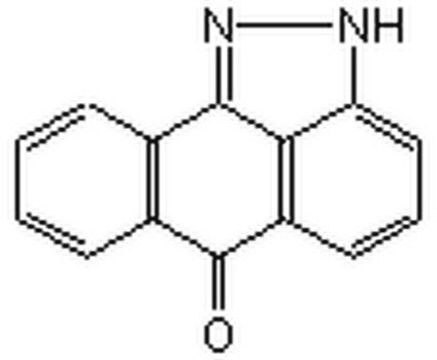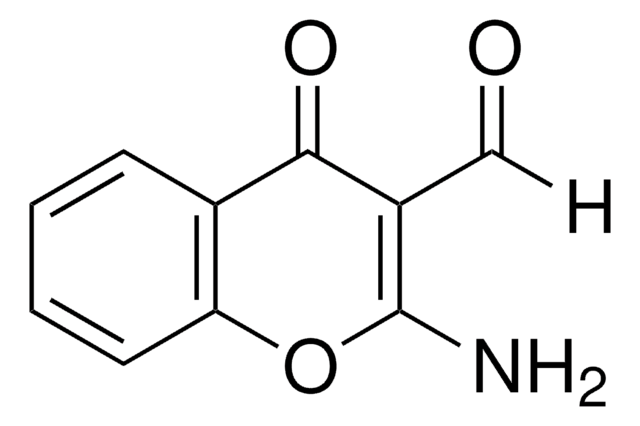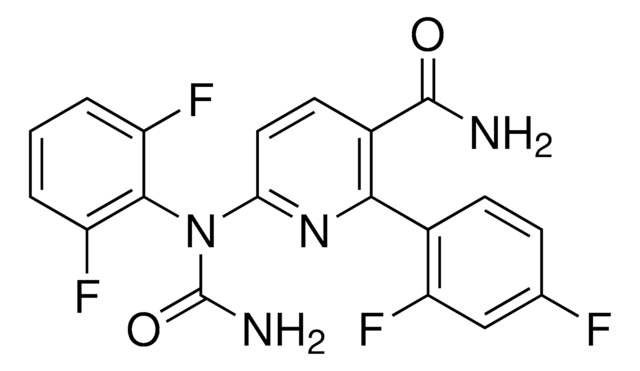SML0543
p38 MAP Kinase Inhibitor IV
≥98% (HPLC)
Synonym(s):
2,2′-Sulfonyl-bis-(3,4,6-trichlorophenol), B10, MT4
About This Item
Recommended Products
Assay
≥98% (HPLC)
form
powder
color
white to beige
solubility
DMSO: 5 mg/mL, clear (warmed)
storage temp.
2-8°C
InChI
1S/C12H4Cl6O4S/c13-3-1-5(15)9(19)11(7(3)17)23(21,22)12-8(18)4(14)2-6(16)10(12)20/h1-2,19-20H
InChI key
AKUKHICVNCCQHN-UHFFFAOYSA-N
Application
Biochem/physiol Actions
Features and Benefits
Storage Class Code
11 - Combustible Solids
WGK
WGK 3
Flash Point(F)
Not applicable
Flash Point(C)
Not applicable
Certificates of Analysis (COA)
Search for Certificates of Analysis (COA) by entering the products Lot/Batch Number. Lot and Batch Numbers can be found on a product’s label following the words ‘Lot’ or ‘Batch’.
Already Own This Product?
Find documentation for the products that you have recently purchased in the Document Library.
Customers Also Viewed
Articles
The mitogen-activated protein kinase (MAPK) family consists of stress-activated (SAPK) and MAPKs. Learn about their network of signal transduction cascades that mediate cellular responses to a diverse range of stimuli.
The mitogen-activated protein kinase (MAPK) family consists of stress-activated (SAPK) and MAPKs. Learn about their network of signal transduction cascades that mediate cellular responses to a diverse range of stimuli.
The mitogen-activated protein kinase (MAPK) family consists of stress-activated (SAPK) and MAPKs. Learn about their network of signal transduction cascades that mediate cellular responses to a diverse range of stimuli.
The mitogen-activated protein kinase (MAPK) family consists of stress-activated (SAPK) and MAPKs. Learn about their network of signal transduction cascades that mediate cellular responses to a diverse range of stimuli.
Our team of scientists has experience in all areas of research including Life Science, Material Science, Chemical Synthesis, Chromatography, Analytical and many others.
Contact Technical Service














